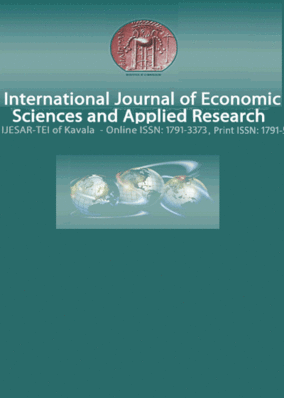A Quantitative Approach to Measure Tax Competitiveness Between EU Countries
Part of : International Journal of Business and Economic Sciences Applied Research ; Vol.7, No.3, 2014, pages 7-23
Issue:
Pages:
7-23
Author:
Abstract:
The basic purpose of the study is to find a metric-variable of competitiveness for each country’s tax regime and to assess the impact of tax regime differentiation across the common market. A country adopting competitive taxation policies manages to attract productive factors, funds and investments from other intra- and inter-countries. The value added tax (VAT), property tax as well as corporate and personal taxes are examined for the twenty seven (27) European Union (EU) countries. The methods applied consist of Least Square Dummy variable models and the results from the estimations for each one of the aforementioned taxes are integrated into a new total competitiveness taxation index (TCTI), following weighted hierarchical quantitative approaches. Our findings suggest that significant differences still exist between the countries examined and the application of diverse tax regime systems results in various tax performances. Using the above procedure, we also find that subgroups exist within the (27) EU countries and that EU lacks taxation policies with common rules or restrictions. Following the TCTI methodology proposed by this research, a tool for monitoring EU tax regimes is introduced in order to assist in the EU integration to a common tax regime.
Subject:
Subject (LC):
Keywords:
Taxation, Public Economics, Tax Regime Structure, Quantitative Methods
Notes:
JEL Classification: H20, COO, R00
References (1):
- Baltagi, B.H., 2005, Econometric Analysis of Panel Data, Third Edition, West Sussex, England: John Wiley & Sons, pp. 12-14.Laffer, A.B., 2004, 'The Laffer Curve: Past, Present, and Future', The Heritage Foundation, 1765.Navez, E-J., 2012, 'The Influence of EU Law on Inheritance Taxation: Is the Intensification of Negative Integration Enough to Eliminate Obstacles Preventing EU Citizens from Crossing Borders within the Single Market?', EC Tax Review, 21,2, pp. 84-97.Mardia, V.K., Kent, J.T. and Bibby, J.M., 1979, Multivariate Analysis, Academic Press, London.Munin, N., 2011, 'Tax in Troubled Time: Is It the Time for A Common Corporate Tax Base in the EU?', EC Tax Review, 20, 4, pp. 121-133.Musgrave, A.R. and Musgrave, B.P., 1973, Public Finance in Theory and Practice, McGraw-Hill, New York.Peeters, B., 2009, 'European Guidelines for Federal Member States Granting Fiscal Competences c.q. Tax Autonomy to Sub-national Authorities', EC Tax Review, 18, 6, pp. 50-52.Peeters, B., 2010, 'Tax Sovereignty of EU Member States in View of the Global Financial and Economic Crisis', EC Tax Review, 19, 3, pp. 236-237.Peeters, B., 2012, 'Tackling Cross-Border Inheritance Tax Obstacles within the EU', EC Tax Review, 21, 2, pp. 54-56.Schwarz, P., 2007, 'Does capital mobility reduce the corporate-labour tax ratio?', Public Choice, 130, 3-4, pp. 363-380.Smith, E., and Webb, J.T., 2001, Tax Competition, Income Differentials and Local Public Services, International Tax and Public Finance, 8, 5-6, pp. 675-691.Stuckler, D., Basu S., McKee, M. and Suhrcke, M., 2010, 'Responding to the economic crisis: a primer for public health professionals', Journal of Public Health, 32, 3, pp. 298-306.Vyncke, K., 2009, 'EU VAT Grouping from a Comparative Tax Law Perspective', EC Tax Review, 18, 3, pp. 299-309.Wilkes, G., 2009a, Ά Balancing Act: Fair Solutions to a Modern Debt Crisis', London: Centre Forum.Wilkes, G., 2009b, 'Slash and Grow? Spending Cuts and Economic Recovery', London: Centre Forum.Wooldridge, J.M., 2002, 'Econometric Analysis of Cross Section and Panel Data', Cambridge, MA: The MIT Press, pp. 265-275.Authorities electronic Publications and DatabasesOECD, 2011, Revenue statistics: Comparative tables, OECD Tax Statistics (database), http://www.oecd.org/statsportalPublication Office of the European Communities, EUROSTAT (database):http://publications.europa.eu/index_en.htmhttp://ec.europa.eu/taxtrends andhttp ://ec. europa, eu/eurostat




